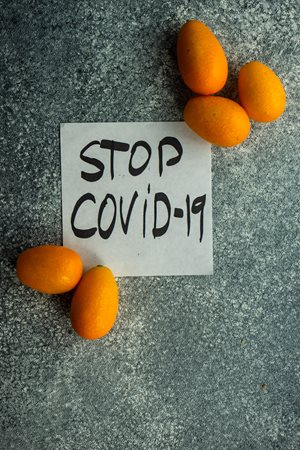4/24/2020
BY: JOHN SPILLSON
 Public concern over health and safety is at an all-time high. Concerns about food are no exception as customers everywhere look for reassurance and peace of mind to know that what they’re consuming each day is safe.
Public concern over health and safety is at an all-time high. Concerns about food are no exception as customers everywhere look for reassurance and peace of mind to know that what they’re consuming each day is safe.
According to guidance released in early April by the World Health Organization (WHO) and Food and Agriculture Organization (FAO) of the United Nations, it is widely agreed upon that food is not a transmission source for COVID-19. As stated, “It is highly unlikely that people can contract COVID-19 from food or food packaging. COVID-19 is a respiratory illness and the primary transmission route is through person-to-person contact and through direct contact with respiratory droplets generated when an infected person coughs or sneezes. There is no evidence to date of viruses that cause respiratory illnesses being transmitted via food or food packaging.”
That being said, there are still many questions surrounding how to maintain food safety while working with or around food. For additional guidance on how to protect the health and safety of workers and food products, read on for more advice provided by the WHO and FAO.
FOOD MANUFACTURING & COVID-19: FAQs
Q: What’s the best way to protect my staff?
A: Having a robust Good Manufacturing Practice (GMP) system in place is the best starting point. Good personal hygiene is paramount. The addition of personal protection equipment (PPE) is also recommended to show your staff you care about them and their safety at a higher level than is recommended.
Q: Is there any new training I should consider?
A: There are no new official training standards being introduced at this time. However, this would be an ideal time to provide refresher training on key food hygiene principles and improve sanitary practices on surfaces to reduce the chance that a possibly contaminated surface could spread an infection. Learn more about The Center’s training options for manufacturers here.
Q: What if we can’t maintain the six-foot physical distancing rule?
A: The guidance for food processors is to distance as much as reasonably possible. The WHO guidelines refer to a three-foot distance between workers, which is half that of the FDA. Processors must do what is feasible for their facility. Social distancing in the absence of proper hygiene may not prevent the spread of the virus. Providing additional layers of protection such as increasing the level and use of PPE, spacing out workstations, limiting staff and possibly rotating lines or crews to reduce the number of people in one area are all great recommendations. The Center’s experts are available to offer guidance with opening a new workstation or plant layout organization.
Q: How can risks during transportation and delivery be minimized?
A: What may have been a ‘good’ practice a few months ago may not be good enough today. The use of sanitizer, wipes, disinfectant and paper towels will now be the new norm to keep both drivers and customers safe. The WHO/FAO also recommend that disposable containers and packaging be used in order to avoid the need to handle and clean any returns. The best way to deal with and respect this virus is to presume that it is on every surface and act accordingly.
Additional FAQs can be found on the WHO website. For more information from the FDA, click here.
No matter what uncertainty lies ahead, having solid GMPs and a robust food safety program will always put your company in the best position to protect staff, products and the business. For assistance with reassessing your food safety plan or GMPs, or to ensure your company is prepared to safely produce products moving forward, The Center can help.
MEET OUR EXPERT
 John Spillson, Food Business Development Manager & Lean Business Advisor
John Spillson, Food Business Development Manager & Lean Business Advisor
John Spillson joined The Center in 2014 to develop and expand the food program. His experience in operating his own business has given him knowledge in production, sales, food safety, marketing, warehousing and logistics. John works to help companies understand that food processing is manufacturing, enabling them to embrace the same strategies that have aided traditional manufacturers for decades. As a Lean Business Advisor, John uses Lean tools such as Value Stream Mapping, 5S, Kaizen events, Standard Work and Problem Solving to help manufacturers of all types effectively reduce waste, improve efficiency, manage risk and improve corporate culture.
Since 1991, the Michigan Manufacturing Technology Center has assisted Michigan’s small and medium-sized businesses to successfully compete and grow. Through personalized services designed to meet the needs of clients, we develop more effective business leaders, drive product and process innovation, promote company-wide operational excellence and foster creative strategies for business growth and greater profitability. Find us at www.the-center.org.
Categories: Food Processing